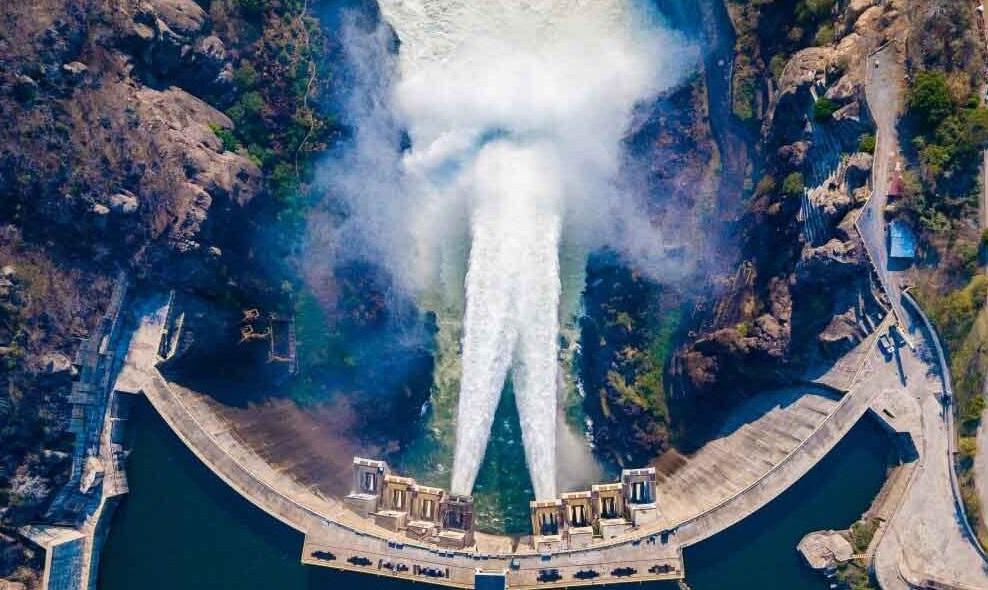Africa-Press – Mozambique. South African company Eskom purchased 66% of all electricity generated in 2024 by Mozambican company Hidroelétrica de Cahora Bassa (HCB), despite a second consecutive year of decline and at a time when the Mozambican government expects to reverse that supply contract.
According to HCB’s report and accounts consulted today by Lusa, of the total 12,351 Gigawatt-hours (GWh) of energy delivered by the Mozambican state-owned company in 2024, the South African energy company received 8,319 GWh, Eletricidade de Moçambique (EDM) 3,451 GWh (approximately 30% of the total), and Zimbabwe’s ZESA received 499 GWh (4%).
Furthermore, HCB recorded transmission losses of 6.76% of total production, compared to 7.60% in 2023.
President Daniel Chapo confirmed on June 23 that he will advance the energy transition process in 2030, with the end of the contract to supply electricity produced in Mozambique to Eskom, in force since 1979.
The head of state made this statement during the ceremony marking the 50th anniversary of HCB, in Tete province, central Mozambique, one of the largest electricity producers in Africa.
“In 2025, in addition to implementing rehabilitation projects, HCB, looking ahead to the energy transition planned for 2030 – Mozambique will control the source of energy generation with the end of the contract with Eskom – must consolidate its role in Mozambique’s energy development,” the head of state said in his speech, thus confirming the intention already signalled by the previous government.
Lusa reported in February 2024 that the Mozambican government – then led by President Filipe Nyusi – intended to “repatriate” for domestic use the electricity it had been exporting from HCB to South Africa since 1979, starting in 2030.
This position is contained in the Strategy for Energy Transition in Mozambique until 2050, approved by the previous government, which sets this goal for 2030: “The main short-term hydropower priority is the repatriation of electricity from HCB, currently exported to South Africa (8-10 TeraWatt-hour/TWh), as well as the addition of 2 GW [gigawatt] of new national hydropower capacity by 2031.”
The document also states that the Cahora Bassa hydroelectric plant is “Mozambique’s most important,” with a total installed capacity of 2,075 MW (megawatts), and is majority-owned by the Mozambican state.
“Since its start of operations in 1979, HCB has exported most of its electricity production to the South African state-owned utility Eskom, with a smaller portion supplied to Electricidade de Moçambique. HCB’s electricity is cheap and clean,” the document states.
Of the total production, only 300 MW of “firm energy” and 380 MW of “variable energy” are supplied by HCB to the Mozambican state-owned utility.
“In 2030, the Power Purchase Agreement between HCB and Eskom will expire, and important decisions will need to be made regarding the marketing and final disposal of HCB’s clean energy,” it adds.
The Mozal aluminium plant on the outskirts of Maputo is powered by electricity supplied by Eskom – a supply contract that, in turn, ends in 2026 – due to coverage difficulties in the Mozambican electricity grid, which is one of the largest electricity consumers in the country, with a demand of 900 MW.
According to the document, the increase in hydroelectric generation capacity will be guaranteed by the new Mphanda Nkuwa hydroelectric plant and the construction of the HCB North Station.
“Mozambique’s unique hydroelectric resources will form the strategic backbone for low-carbon energy production and the country’s green industrialization ambitions, which is a national priority,” the government stated in the same document.
For More News And Analysis About Mozambique Follow Africa-Press






